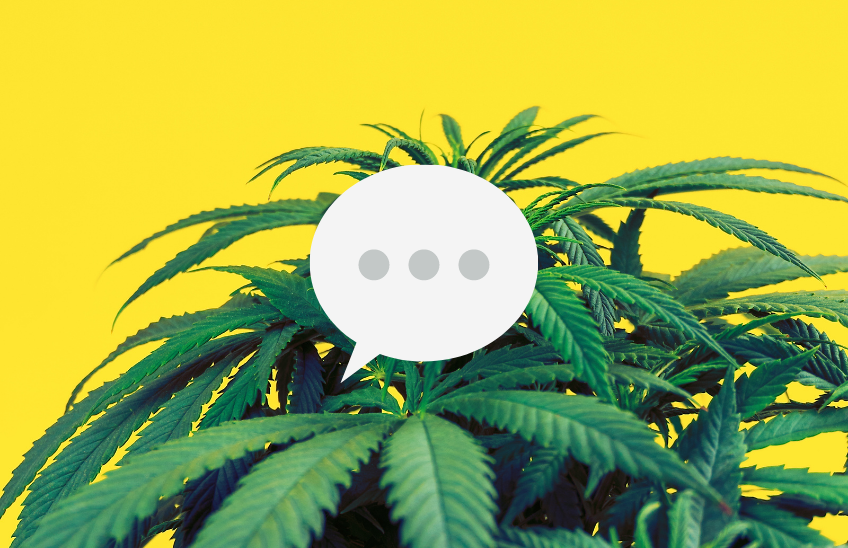Pot. Weed. Bud. All those bogus slang terms that the D.A.R.E program taught. Marijuana.
With the rise of the legal cannabis industry, companies are dipping their toes in bringing the plant to the general public. Despite the growing acceptance of cannabis and the increasing number of states where the plant is legal recreationally and medically, it remains illegal on a federal level. This means that advertising and marketing marijuana products is complicated and impossible in some cases. However, brands are finding creative and effective ways to get around these restrictions and get the word out about their products.
Letter of the Law
Cannabis remains illegal on the federal level. Even in states with legal medical or recreational marijuana, federal law supersedes state and local laws, meaning that the government has the final say. Even as the federal government has largely shifted its focus away from cannabis, the laws are still in place, and defying them can come with dire consequences—ranging from fines to criminal penalties.
Google and Facebook ban the advertisement of cannabis and related paraphernalia on the platform, which takes over half of the digital advertising market off the table for cannabis businesses.
Getting Creative
This doesn’t mean that cannabis can’t find a place on these platforms in the form of organic content. However, organic content can get flagged by the platform, resulting in removal or a ban altogether. Organic content cannot be geo-targeted to only legal states, meaning that marketers need to get creative with their language and shy away from direct promotion. Additionally, SEO has enabled cannabis brands to market themselves via search results without putting money behind promotion.
Programmatic advertising is an increasingly appealing option, with the ability to geofence advertising promotions to legal states and those over 21. These ads appear as banners on websites, on television services like Roku, and in mobile games. While it is platform-dependent on allowing these advertisements, many marijuana brands are finding success with this approach.
Guerilla advertising has been wildly successful in both legal and illegal states. Some well-placed stickers have led to brands achieving viral success. Recently, Bubby’s Baked made the world’s largest edible, an 850-pound brownie with over 20,000 milligrams of THC, leading to substantial earned media in major publications worldwide.
Foxy and Eaze broke into Tribeca X, the branded content showcase of the Tribeca Film Festival in New York, with The Pope of Dope. The Pope of Dope, a cannabis activist biopic, premiered at the Tribeca X Film Festival. Backed by Foxy and Eaze, this is the first marijuana brand-backed project ever to make it into the Tribeca Film Festival, leading to a big surge of popularity in the brand without explicit advertising.
Success from Brands
Houseplant, Seth Rogen’s cannabis brand, has had wild success, with product launches including cannabis, lighters, and ashtrays. Houseplant is one of the first cannabis brands to get national mainstream attention. Seth Rogen’s celebrity status and weed-loving persona do a lot of the heavy lifting of their promotions, but another part of the success around Houseplant is that the brand is divided into House (which sells home goods and cannabis paraphernalia) and Plant (which sells marijuana). Advertising lighters and vases are far from illegal, meaning that the brand benefits from paid advertising from the legal aspects of the business and can avoid ever mentioning the plant aspect, as it is implied.
Often, celebrity-backed cannabis brands succeed due to their existing audience and their association with marijuana in general. Some famous stoners, like Snoop Dogg and Tommy Chong, have created and promoted successful weed businesses through their existing network and innate associations with the plant. Even celebrities that have not typically been associated with marijuana have been able to launch successful weed brands, like Jaleel White (“Did I do that?”) and Melissa Etheridge.
In recent years, influencers have also significantly impacted cannabis brand popularity— from paraphernalia to the actual strains. Formal influencer programs tend to get shut down in these spaces. However, influencers who promote these products and brands based on their personal connections are legally clear, leading to some brands exploding and achieving cult status. Blazy Susan has become a status symbol for marijuana users, with their signature pink rolling papers and rolling trays. The brand’s popularity has been attributed to super fans with big audiences on social media, like comedian Ashley Ray and other verified Twitter and Instagram profiles.
What’s Next?
The changing legal landscape around marijuana will have massive impacts on the industry beyond advertising. As more states legalize recreational marijuana, it is expected that the advertising restrictions will be loosened, and it is likely that we will start seeing paid advertising for weed. However, the industry has had success in marketing without ad spends and will likely continue to expand on these tactics—utilizing celebrities, influencers, and guerilla promotion.
How Can YMC help?
If your brand is interested in engaging with some non-traditional marketing, we’re here to help.
At YMC, we specialize in connecting brands with Gen-Z and Millennial consumers, and we’d be happy to share our wealth of knowledge with you. Contact us today!



